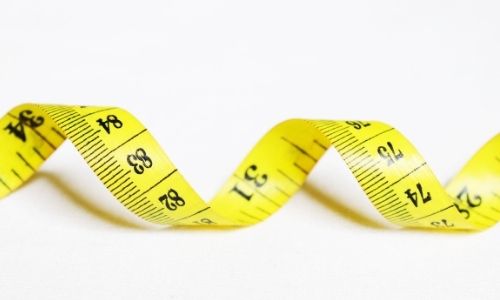While growing up, we must have come across one or more myths related to a person’s height growth. However, not all these myths are entirely accurate. Most of us believe it, and it can cause some significant negative impact on our perception of ourselves.
Do know that it is not utterly impossible for us to look taller. The change might not be significant, but there are ways you can look taller and maybe even increase your height by a few inches. So, regain your confidence and reach the heights you desire! But hey, even if you cannot grow taller, remember inner beauty is what matters!
Let us now get into the article and discuss the myths and the reality of height growth and how we can look taller after the age of 21.

Before discussing ways to increase height after the age of 21, let us talk about some of the most common misconceptions and myths related to height growth that we have all heard at least once.
1. Coffee stunts growth
Coffee at night can disturb your sleep cycle, which is essential for growth. Other than this reason, it is entirely alright to consume coffee but limit it to a maximum of three cups per day for adults and one cup for teens.
2. Reflexological insoles help
According to this, these insoles apply pressure on specific areas of your sole, which can help to increase your height. However, there is no medical or scientific research to prove so.
3. Drinking milk increases your height
Milk equates to calcium, and calcium equates to height. But what we fail to realize is that milk is not the only source of vitamin D and Calcium. Beans, chicken, almonds, leafy greens like spinach, kale, and so on are also good for heigh growth.
What factors determine our height?

Since we have eliminated a few myths that revolve around our height growth, let us discuss some factors that determine our height.
1. Genetic influences
An essential factor in height growth is that genetics decides your height. But this is true, but to an extent, i.e., other factors excluding genetics affect your height growth. While 60 to 80% is your genetic influence, according to studies, 20 to 40% of these factors include environmental factors like your diet, lifestyle, exercise, sleep, and hormones.
Epiphyseal plates are growth plates found at the end of long bones, and they are responsible for increasing the bone length, thereby our height. There is this concept that you don’t grow after you hit puberty.
Due to all the hormonal changes during puberty, these epiphyseal plates might harden and eventually close. This can stop your growth.
2. Diet
The right amount of nutrients like vitamins, minerals, magnesium, phosphorus, calcium, fatty acids, and so on are crucial when it comes to the proper growth and development of your body. Malnutrition can also stun the child’s growth.
Food items like beans, chicken, almonds, yogurt, sweet potato, egg, berries, fish, milk, meat, and leafy greens like kale, spinach, cabbage are what you can include in your daily diet to get the required amount of nutrients intake.
3. Environment changes
Factors like climate change, childhood experiences, exercise, and even diseases can influence height growth. More growth hormones are released when a child has a physically active childhood. This directly increases the growth plates and our height.
Medical conditions and syndromes like gigantism or dwarfism, tuner syndrome, down syndrome, Cushing syndrome, etc., also effects the child’s growth. Medications for different conditions like ADHA can also influence or stun the child’s development.
4. Sex
There are two factors when it comes to the sex-related difference in height. The first is that girls hit puberty much earlier than boys, which means their bodies stop releasing growth hormones earlier than boys.
The second factor is due to the level of testosterone – directly proportionate to the child’s growth. When compared to girls, boys have a higher level of testosterone which means that boys tend to grow taller than girls.
Can our height be increased after the age of 21?
As mentioned above, after you hit puberty, your body stops realizing growth hormones. However, if your body still produces growth hormones even after hitting puberty, you will get taller. However, it is not impossible to look taller and not reduce our height by performing the wrong exercises.
When we reach such a stage, it isn’t easy to increase our height, but with the right type of food, good posture, and so on, we will be able to look taller.
So, if you are below 21, ensure you consider these factors as it helps to maximize your growth. While if you are above 21-year-old, don’t worry – there are things you can do to make yourself look taller.
Things you can do to increase your height or look taller

Even though there isn’t much that you can do about your height after your growth phase, there are ways for you to look taller. Some of them are listed below –
1. Strengthen core muscle by exercising
You must be wondering what core muscles are? These muscles are found in your abdomen, along the spinal column to support it. The reason behind strengthening core muscles is that without strong core muscles, over time, the spine goes weak. As a result of this, we tend to slouch, which can lead to the spine compressing, thereby looking shorter.
To strengthen the core muscles, certain exercises help. Some of them are listed below –
- Plank – This position involves you staying in the top push-up position. The best way to understand if you are in the plank position is to focus on your abdomen, i.e., it will tighten.
- Star – Lie facing up and extend your arms and legs like a star. Lift your arms, legs, and your head and hold the position.
- Swimming – Not only does this help with weight reduction (since your whole body moves), but it helps promote human growth hormone.
- Yoga – You need not do intense yoga workouts, but a few mantras daily can help stretch your spine, increasing your height. It also helps with your posture.
Other exercises like gymnastics, dancing, meditation, and even sports can help strengthen your muscles and promote muscle growth.
2. Good posture
Do you stoop when you sit or stand? This is a bad posture as it not only makes you look shorter than your actual height, but it can also cause problems like headaches and back pains due to extra pressure on your backbone. Another major issue that occurs when you slouch is that your lungs compress, meaning that the lung capacity and the amount of oxygen you take in reduces.
Apart from this, the bones and joints are correctly aligned in a proper posture. This lessens the tension, strain, and pressure felt in your back, shoulder, and even your neck. This means that your body does not need to exert itself to do the regular functions. So, we tend to be less tired while having an increased energy level.
Ensure you follow proper sitting, standing, and sleeping positions for good posture. Some of them are given below –
- Make sure you keep your shoulders straight and pulled back.
- While sitting and working on a computer or laptop, do not slouch. Make sure the computer screen is the same as your eye level.
- Use pillows or other soft cushions for back support.
- While standing, your feet should be shoulder-width apart.
- The weight of your body should mainly fall on your heels, not your toes.
- Avoid standing on your tip-top for an extended period of time. Similar case with pointed heels – stay in them for too long, and you are prone to back pains.
- If you have to stand for a long duration, walk around instead of being stagnant in one position, which helps to stretch muscles.
- For correct body and head alignment, ensure that your earlobes align with your shoulder.
- This can be a bit difficult but while standing, try to tuck your stomach in to support your spine. And NO – by this, I do not mean to hold your breath. Slightly pull your stomach in, but you should still be able to breathe correctly.
3. Importance of balanced diet
Since childhood, our parents might have told us the importance of a balanced diet. Getting adequate nutrients is crucial because our body and mind growth depends on it. However, childhood or teenage is not the only time a balanced diet is essential – even if you are an adult, your immune system will fail if you do not eat properly.
According to the WebMD, the Recommended Dietary Allowance or RDA, the Adequate Intake or AI, and Tolerable Upper Intake Level or UL for different vitamins, minerals, and other nutrients are listed below –
| Nutrients | RDA or AI | UL |
| Calcium | Age (19-50) – 1,000 mg/day
Women (age 51+) – 1,200 mg/day Men (age 71+) – 1,200 mg/day |
Age 19-50 – 2,500 mg/day
Age 51+ – 2,000 mg/day |
| Iodine | 150 mcg/day | 1,100 mcg/day |
| Iron | Men – 8 mg/day
Women (age 19-50) – 18 mg/day Women (age 51+) – 8 mg/day |
45 mg/day |
| Magnesium | Men (age 19-30) – 400 mg/day
Men (age 31+) – 420 mg/day Women (age 19-30) – 310 mg/day Women (age 31+) – 320 mg/day |
350 mg/day |
| Manganese | Men – 2.3 mg/day
Women – 1.8 mg/day |
11 mg/day |
| Phosphorus | 700 mg/day | Up to age 70 – 4,000 mg/day
Over age 70 – 3,000 mg/day |
| Sodium | Age 19-50 – 1,500 mg/day
Age 51-70 = 1,300 mg/day Age 71+ – 1,200 mg/day |
2,300 mg/day |
| Zinc | Men: 11 mg/day
Women: 8 mg/day |
40 mg/day |
| Vitamin C | Men: 90 mg/day
Women: 75 mg/day |
2,000 mg/day |
| Vitamin A | Men – 900 mcg/day
Women –700 mcg/day |
3,000 mcg/day |
Apart from these vitamins and minerals, you also need to have a balanced diet (according to the Food Standard Code) consisting of –
- 24 grams of saturated fatty acids
- 30 grams of fiber
- 50 grams of protein
- 70 grams of fat
- 90 grams of sugar
- 310 grams of carbohydrates
- 8700 kilojoules of energy
As part of your daily diet, you can include some food items like –
- Nuts
- Oranges
- Carrots
- Beans
- Peas
- Leafy vegetables – spinach, kale…
- Potatoes
- Eggs
- Red meat
- Fish – tuna, salmon…
- Chicken
- Milk
- Dairy products – cheese, yogurt
Apart from food, ensure that you drink at least six to eight glasses of water per day. Not only does it flush the toxins out of your system, but it also improves the body’s capacity to absorb nutrients which is vital for growth.
4. Sunlight exposure
Now, you must be wondering how sunlight has any relation to making you look taller. Sunlight is a free and natural source of Vitamin D. Everyone must know this, but did you know that without sufficient vitamin D, your body finds it difficult to absorb calcium essential for bone growth. The best time to sunbathe is early morning or late afternoon since the UV rays are less than other times of the day.
If you do not get your daily dose of sunlight, you can consume food rich in Vitamin D like soy milk, almond milk, yogurt, margarine, salmon, tuna, trout, beef liver, mushroom, and so on.
According to the National Institute of Health, the recommended average intake of vitamin D per day is –
| Age | Recommended Amount |
| Birth to 12 months | 10 mcg (400 IU) |
| Children 1-13 years | 15 mcg (600 IU) |
| Teens 14 – 18 years | 15 mcg (600 IU) |
| Adults 19 -70 years | 15 mcg (600 IU) |
| Adults 71 years + | 20 mcg (800 IU) |
| Pregnant/breastfeeding teens or women | 15 mcg (600 IU) |
5. Adequate sleep (around 6 to 9 hours for adults)
When we sleep, our body physically is at rest, but it will still be repairing all the minute wear and tear that took place all morning. Without adequate sleep, our mind gets tired and will not be able to function correctly. Generally, this is why sleep is essential.
When we specifically discuss why sleep is important for growth, we must focus on the hormones that our body releases at night. The two main hormones are growth hormones and thyroid-stimulating hormones, both of which are extremely important for bone development.
How to achieve deep sleep?
- Pillow and mattress matters – use soft pillows and a firm mattress.
- Change your bedcover and pillowcase regularly.
- A warm bath before sleep time helps.
- Try to sleep in a dark and quiet room.
- Calm down and try to relax.
- Focus on your breathing – take deep breaths.
Your Takeaway
Epiphyseal plates are growth plates found at the end of the long bones and are responsible for lengthening bones. These plates mature during puberty and usually fuse or close after puberty, halting our growth. However, this does not mean that we cannot look taller. We can grow by a few inches with a well-balanced diet, proper sleep, sufficient sunlight, good posture, and regular exercise.
I hope you found this article helpful. Do you know any other tips and tricks to look taller? Please do let us know through the comment section below.


